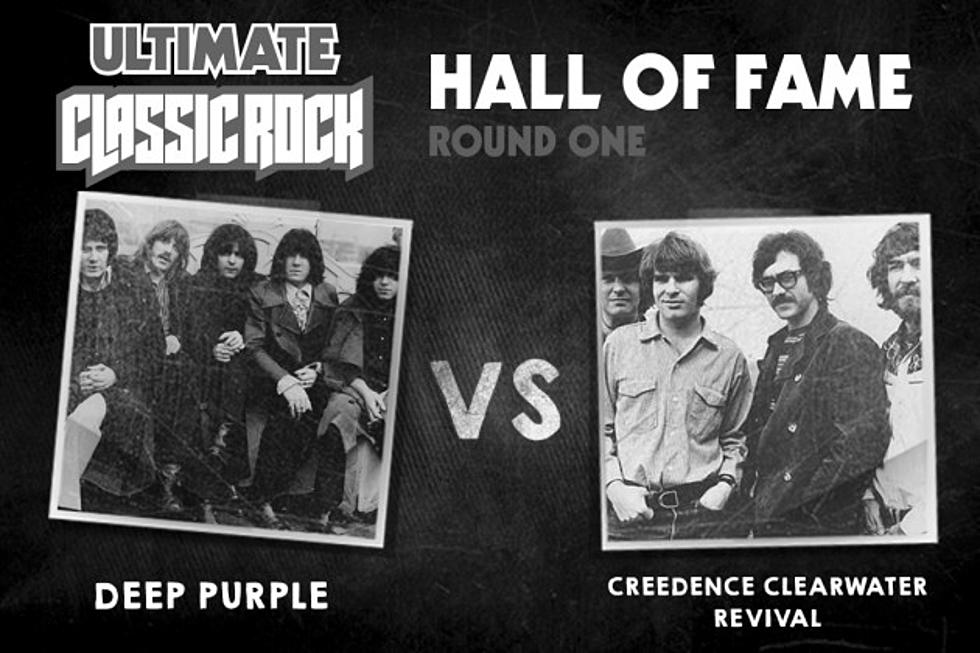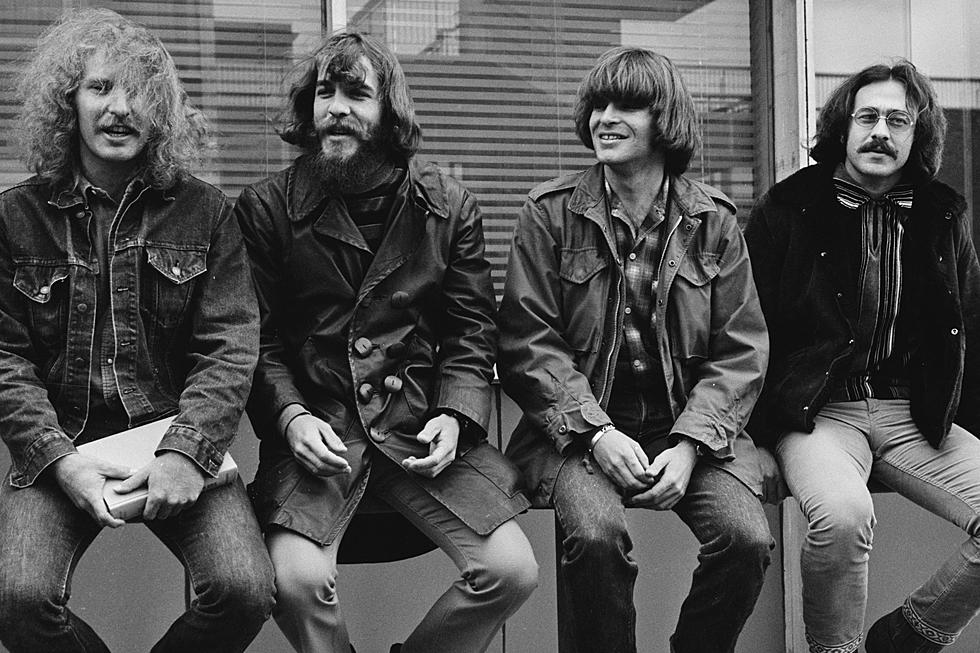
Deep Purple vs. Creedence Clearwater Revival – Ultimate Classic Rock Hall of Fame Round One
Deep Purple and Creedence Clearwater Revival have given us some of the most immediately memorable -- and enduring -- radio hits of the rock era. Now, they'll battle one another for entry into the 100 percent fan-voted Ultimate Classic Rock Hall of Fame.
CCR got its start first, coming together in 1959 when guitarist John Fogerty, drummer Doug Clifford, and keyboard player (later bassist) Stu Cook debuted as the Blue Velvets, a trio that worked various gigs -- including backing up John's brother, singer Tom Fogerty. Signing to Fantasy Records in the mid-'60s as the Golliwogs, the group muddled through for a few years in search of a direction until, in 1967, new label boss Saul Zaentz ordered a name change.
Freshly rechristened Creedence Clearwater Revival, the group doubled down on its commitment to the music, and their efforts quickly paid off; by the end of 1968, they'd released a debut LP to encouraging sales and sent a single, their cover of Dale Hawkins' 'Suzie Q,' into the Billboard Top 20. The next year, they'd put out no fewer than three classic albums: 'Bayou Country,' 'Green River,' and 'Willy and the Poor Boys.' Sadly, by 1972, CCR would implode in a toxic cloud of acrimony that persists among the surviving former members today, but the band's classic records still sound every bit as fresh as they did the day they were recorded.
While the Golliwogs were being remade into Creedence Clearwater Revival, Deep Purple were forging their own bond half a world away. Initially the brainchild of former Searchers drummer Chris Christie, who envisioned a sort of rock supergroup with rotating members, the band started out as Roundabout; after Christie's evident lack of commitment got him fired from his own band, a pair of the new recruits -- keyboard player Jon Lord and guitarist Ritchie Blackmore -- decided to continue on their own.
Lord and Blackmore held their own auditions, adding drummer Ian Paice and singer Rod Evans, along with bassist Nick Simper; as Deep Purple, the band headed into the studio in 1968, and by the end of the year, they had a Top 40 album ('Shades of Deep Purple') and hit single (a cover of Joe South's 'Hush').
Of course, as the band would shortly discover, achieving rock god status wasn't as simple as just cranking out hit records; in fact, label difficulties and a struggle over musical direction nearly wrecked Deep Purple completely. But by 1970, with new bassist Roger Glover and singer Ian Gillan in the fold, they'd settled on a heavier sound, and the rest was history -- which still continues today, as the group (after many, many lineup changes, as well as a break from the late '70s to the mid-'80s) continues to record and tour.
So which of these rock legends will move on to the semifinals? You can vote once an hour between now and Monday, Jan. 12, at 11:59PM ET. This month’s winner will be announced on Jan. 27. Be sure to read our official rules.
Here's the 10 Worst Snubs by That Other Rock and Roll Hall of Fame:
More From Ultimate Classic Rock









